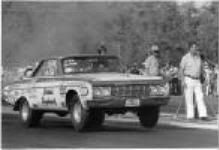

|
| Search | Car Forums | Gallery | Articles | Helper | Quality Dog Food | IgorSushko.com | Corporate |
|
| Latest | 0 Rplys |
|
|||||||
 |
 Show Printable Version | Show Printable Version |  Email this Page | Email this Page |  Subscribe to this Thread
Subscribe to this Thread
|
|
|
Thread Tools |
|
|
#1 | |
|
AF Newbie
Join Date: Dec 2011
Location: Newaygo, Michigan
Posts: 79
Thanks: 0
Thanked 1 Time in 1 Post
|
Question for a professional
my brother has to replace the bearings in his silverado much like i did in my Jimmy last year. not a big deal, as we are capable of the job. but, he asked me a question that i do not have the answer to. i have a theory, but that is not the same. his question is, why the pinion bearings have to have a preload on them. since every other tapered roller bearing has some amount of play in them. my theory, is it requires preload because of the lubricant, temperature, and speed of the bearings. i believe that using hypoid gear lube will allow the bearings to slide under cold winter temperatures if they are not held against the races firmly. and a sliding roller bearing flat spots, and then rapidly fails. am i even close?? i was a mechanic all of my life. but never had much in the way of formal training. i have no idea of how many tapered roller bearings i have replaced over the years. but never stopped to ask that question.
|
|
|
|

|
|
|
#2 | |
|
A990 racer
 Join Date: Mar 2002
Location: Chestertown, New York
Posts: 17,050
Thanks: 26
Thanked 383 Times in 374 Posts
|
Re: Question for a professional
Any bearing that is subject to high loading such as the pinion bearing and side bearings require some degree of pre-load to prevent the shaft or component they are mounted to from " walking " or unloading, thus preventing premature failure of the bearings or components. Even front wheel bearings are subject to this. As the bearings seat in and some normal wear occurs they would loosen up somewhat then the "death rattle" begins.
__________________

|
|
|
|

|
|
|
#3 | |
|
AF Newbie
Thread starter
Join Date: Dec 2011
Location: Newaygo, Michigan
Posts: 79
Thanks: 0
Thanked 1 Time in 1 Post
|
Re: Question for a professional
well, the way i was taught to do front wheel bearings (on old 2wd cars and trucks) [which was a LONG time ago] was to snug them up, then back them off 1/8-1/4 turn. so there was a little clearance. maybe i was taught incorrectly, but in all these years, i have never had a front wheel bearing fail. and there was never an issue with bearings rattling. i can not even imagine how many hundreds of thousands of miles ago that was. i really miss jumping in the car, and just driving, just for the sake of taking a ride. for $20.00, you could go ANYWHERE in Michigan, now, you need to pack a brief case full of $ in order to do that.
|
|
|
|

|
|
|
#4 | |
|
A990 racer
 Join Date: Mar 2002
Location: Chestertown, New York
Posts: 17,050
Thanks: 26
Thanked 383 Times in 374 Posts
|
Re: Question for a professional
That wheel bearing method still provide some preload if you actually " snugged" them up properly.
__________________

|
|
|
|

|
|
|
#5 | ||
|
AF Fanatic
Join Date: Oct 2007
Location: EVERETT, Massachusetts
Posts: 10,898
Thanks: 8
Thanked 432 Times in 431 Posts
|
Re: Question for a professional
Quote:
back in 95 I did this check to be sure when new the factory greased and set these properly one side was far too loose. I know of a person that had the nut too tight and the bearings rapidly failed .. better too loose than too tight less than 1,000 mi the bearings had to be replaced. my boat trailer is the same set up. same procedure .. On one GM 2wd I had the front right bearing was making some noise . at 300,000 miles . I removed the bearing and could not see any damage . installed new and noise gone.. weird .. sold vehicle all my miles 375,000 miles driver side never failed . |
||
|
|

|
|
 |
POST REPLY TO THIS THREAD |
 |
|
|